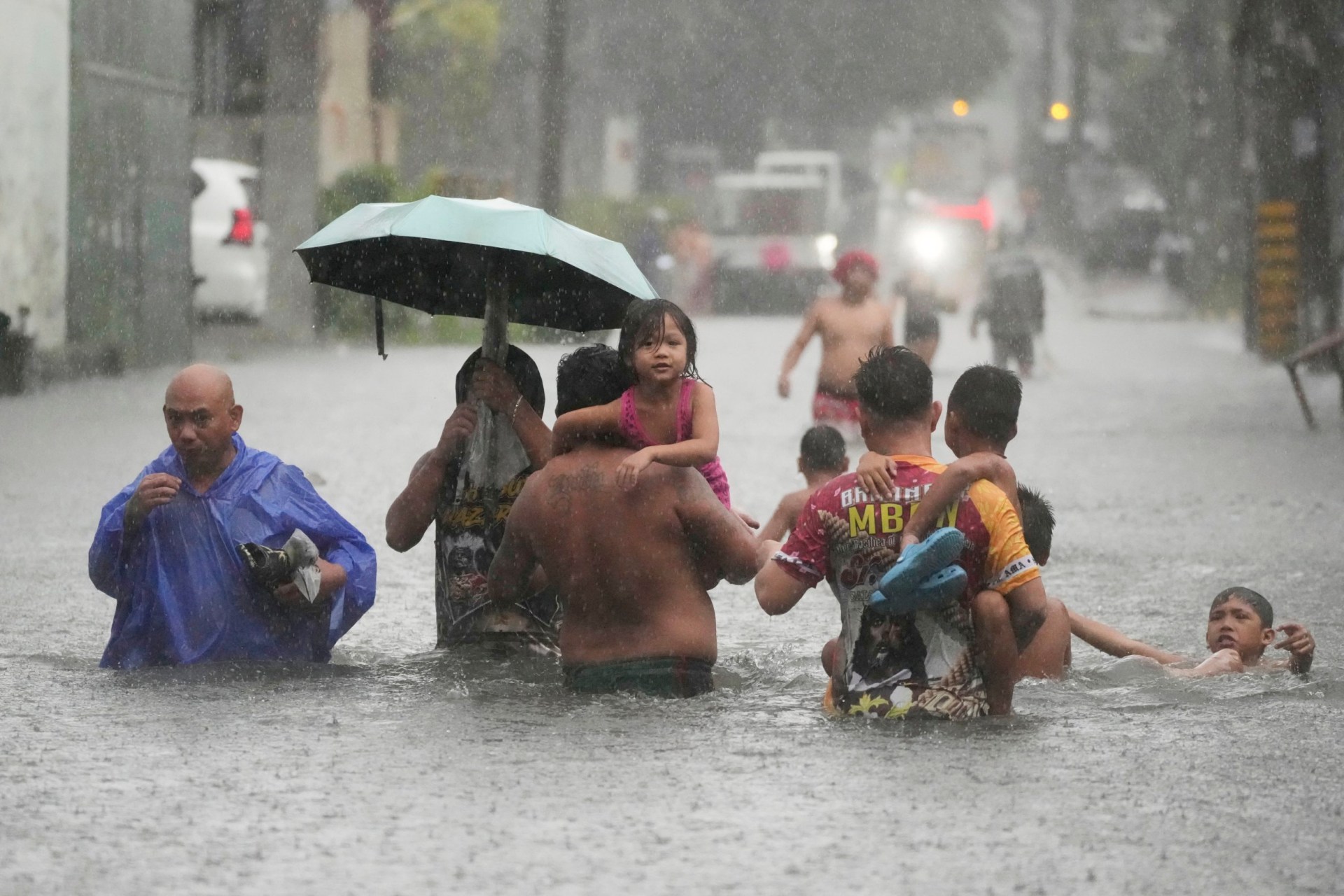Storm Wipha Brings Extreme Weather to Asia
Storm Wipha has been causing widespread disruption across several countries in Asia, with people facing strong winds, heavy rainfall, flooding, and landslides. The storm has already affected Hong Kong, southern China, and the Philippines, and is now expected to hit Vietnam, bringing more severe weather conditions.
The Foreign Office has issued advice for UK nationals in Vietnam, warning them to expect heavy rainfall, strong winds, flooding, and mudslides. The storm is forecasted to reach Ha Long Bay, Hanoi, and Ninh Binh on Tuesday, prompting local authorities to prepare for potential emergencies.
In the Philippines, five people have lost their lives, and seven others are still missing following the widespread flooding caused by the storm. Locals have been seen wading through water that reaches up to their necks, as roads remain submerged and inaccessible. The situation highlights the increasing risks associated with extreme weather events in the region.
The impact of Storm Wipha was first felt in Hong Kong on Sunday, leading to school closures, flight cancellations, and damage to infrastructure. Social media platforms have been flooded with images and videos showing powerful gales, heavy rain, and people struggling against the wind. Some individuals were even swept away by the strong gusts, while others crawled along the ground to avoid being blown over.
As the storm moves towards southern China and Vietnam, it is expected to intensify further. The Hong Kong Observatory has issued its highest cyclone warning, signal 10, indicating the severity of the situation. Online footage shows dark clouds rolling over the skyline as the storm makes landfall, creating a dramatic and dangerous atmosphere.
The Chinese national forecaster has warned that the storm is likely to spread across parts of Southeast Asia, including Laos, central and northern Thailand, and Myanmar. Coastal regions such as Guangdong, Guangxi, Hainan, and Fujian are expected to experience heavy rain and strong winds. This could lead to significant disruptions in transportation and infrastructure, with potential secondary disasters such as flooding, landslides, and urban waterlogging.
In addition to these areas, parts of South Asia, including Bangladesh and eastern India, may face torrential rain in the coming days. The forecaster has emphasized the need for preparedness, as the extreme weather could have long-term impacts on communities and ecosystems.
Authorities in affected regions are urging residents to stay informed and follow safety guidelines. Emergency services are on high alert, and local governments are working to mitigate the effects of the storm. As the situation continues to evolve, it is crucial for people to remain vigilant and take necessary precautions.
For those looking to stay updated on the latest developments, there are various resources available. News outlets provide regular updates on the storm’s progress, and local authorities often issue advisories through official channels. It is also advisable to check reliable weather forecasts and follow the recommendations of emergency management agencies.
With Storm Wipha continuing to affect multiple countries, the importance of community resilience and preparedness cannot be overstated. As the weather patterns become increasingly unpredictable, it is essential for individuals and organizations to work together to minimize the impact of such natural disasters.






